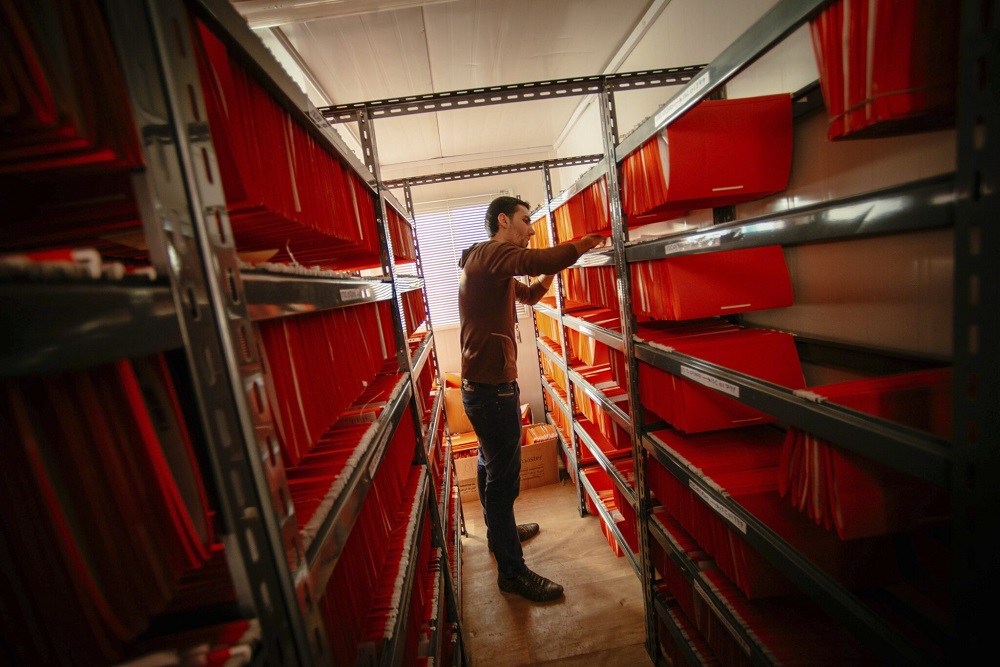Disasters, or the threat of a disaster, can trigger displacement in many ways: pre-emptive evacuations or planned relocations from high-risk hazard areas; escape from life-threatening sudden-onset disasters; or a gradual shift of populations away from areas of slow-onset disasters (such as drought or coastal erosion) due to the loss of livelihoods, decreasing access to food and increasing poverty. And climate change is exacerbating the risk of disaster displacement. In 2018, an estimated 108 million people needed the international humanitarian system to provide life-saving assistance because of floods, storms, droughts and wildfires – a number that, it is estimated, could double by 2050.[2]
The humanitarian consequences of displacement are devastating. The people who suffer the most are – and will continue to be – the world’s poorest: those who do not have the resilience to protect themselves from disasters and who, more often than not, live in disaster-prone areas.[3] Examples of how to prevent or mitigate disaster displacement were discussed at several events convened by the GP20 initiative from 2018 to 2020.[4] The examples put forward showed that the conditions giving rise to disaster displacement can be prevented or mitigated with reliable data collection, early humanitarian action, integrated policy approaches and engagement of communities at risk of displacement. These examples introduce some key themes and approaches on how to prevent and reduce disaster displacement, and merit sharing.
Prevention and preparation
While there has been a strong focus on achieving durable solutions to internal displacement, it would clearly be even better to prevent and address the conditions that lead to disaster displacement. This is one of the reasons why ‘anticipatory’ humanitarian action, such as forecast-based financing (FbF), has gained increasing attention in recent years. FbF works by automatically releasing pre-approved funds for pre-agreed humanitarian actions once a specific threshold is reached. Based on scientific forecasts and risk analysis, it allows for better disaster preparedness, reducing the impact of hazards and contributing to preventing or reducing displacement.
A good example of FbF is the response taken by the International Federation of Red Cross and Red Crescent Societies (IFRC)[5] to dzud, a Mongolian climatic phenomenon of severe drought followed by extreme cold which has become more frequent in Mongolia recently. Half of the country is at risk, especially herding communities and their livestock. To support the herders before they lose their livestock and thus might feel compelled to move to cities and/or informal settlements, a dzud risk map was developed, which includes 14 indicators based on weather forecast data. Once these indicators reach the trigger point, funding is automatically allocated. In 2020, some 4,050 people from 1,000 vulnerable herder households received unconditional cash assistance and animal care kits. This reduced the number of animal deaths, thereby preserving the herders’ sole source of income and food.
While it is not always possible to prevent displacement as natural hazards remain largely unpredictable, the dzud case shows that it is possible in certain circumstances.
The importance of data
Preventing disaster displacement is no easy endeavour as it presupposes understanding and identification of its underlying, complex and interrelated causes. As evidenced by the development of the dzud risk map in the previous example, effective prevention and preparedness require timely, accurate data on the phenomenon as well as on communities at risk of displacement – and require those data then to be used to mitigate human suffering.
The main challenges range from a lack of a) inter-operability of data, b) coordination among collecting entities and c) consensus on key metrics and definitions to establishing when displacement starts and ends, who is displaced and for how long. Slow-onset events are particularly difficult to monitor since they occur over a longer period of time and are triggered by a wide range of inter-connected drivers; as a result, it is often difficult to distinguish displacement from migration. More effort is also needed to capture small-scale events, which are often less visible. Reliable data are needed to generate an appropriate response for the displaced and to learn from these events on how to reduce displacement.
In the Philippines, the Disaster Response Operations Monitoring and Information Center (DROMIC) acts as a repository for disaster data. DROMIC gathers disaggregated data (for example, age, gender and disability) and information from different sources (including meteorological and volcanic institutes and local networks of social workers) on displaced and other affected populations, evacuation sites, damaged houses and humanitarian relief aid, arranged by geographical location and type of disaster. It then uses predictive analytics for potential disaster events to prepare humanitarian responses using mathematical theories and spatial technologies, including drones. Baseline data and information are also used for planning durable solutions, helping communities to become more resilient and to recover from disasters.
An integrated policy approach
Another important aspect is the development of appropriate normative and policy frameworks. Disaster displacement is a cross-cutting issue, and therefore requires a coordinated policy approach integrating disaster risk reduction, climate change adaptation and human mobility, in addition to human rights, development and humanitarian action. This means incorporating human mobility challenges – including planned relocations – into disaster risk management laws and policies, National Adaptation Plans and other relevant development processes at local, sub-national and national levels.
A good example of an integrated policy approach at the national level is Vanuatu’s 2018 National Policy on Climate Change and Disaster-Induced Displacement.[6] The policy identifies twelve strategic areas and gives time-bound institutional and operational actions for each. System- and sector-level interventions cover a range of areas including governance, data, protection and capacity building, and meticulously integrate consultation and participation mechanisms for local communities. This is a more holistic type of approach, bringing together policy areas such as land and housing, health, education, livelihoods, indigenous knowledge, security and access to justice; consideration is also given to the effective practical application of the policy, through provision of guidance on implementation, financing and monitoring. The Platform on Disaster Displacement works closely with governments to establish similar policies at regional and national levels.
Engaging affected communities
There is an intrinsic link between preventing or mitigating displacement risks and the resilience of affected communities. It is important to understand how communities can themselves better anticipate, prepare for and reduce the impact of disasters; it is also vital to ensure that affected communities are included in discussions that affect them and are empowered to respond.
The Sister Village programme in the Indonesian Mount Merapi region is a good example of how a community-initiated project can help the community prepare for disaster displacement.[7] The programme pairs villages located in areas with high risk of volcanic eruptions with other, culturally related villages in safer areas. It was initiated by communities at risk of displacement, with the government facilitating the twinning process. An essential component is the Village Information System, a database of individuals (and their assets) to be evacuated to enable faster assistance during a crisis. Evacuees can then access land, shelter, schooling and health care and receive identification cards. In addition, a government fund is available for community-based development and disaster risk reduction measures.
These are inspiring examples of how governments, local communities and civil society can each do their part and work together to address disaster displacement. However, a lot more needs to be done. The Sendai Framework for Disaster Risk Reduction 2015–2030, the Global Compact for Migration, the UNFCCC Task Force on Displacement and the UN Secretary-General’s High-Level Panel on Internal Displacement are evidence of increasing international attention to displacement in the context of sudden- and slow-onset disasters. At the regional level, it is important to ensure that these frameworks and commitments are implemented alongside existing regional frameworks such as the Kampala Convention. However, the focus still often remains on displacement due to conflict and violence. Recognising the multiplicity and interrelated nature of drivers of displacement, the aim should not be to prioritise one over the other but to strive for prevention, mitigation and durable solutions for all internally displaced people.
[1] IDMC (2020) Global Report on Internal Displacement. A Summary www.internal-displacement.org/sites/default/files/publications/documents/2020-IDMC-GRID-executive-summary.pdf
[2] IFRC (2019) The Cost of Doing Nothing https://media.ifrc.org/ifrc/wp-content/uploads/sites/5/2019/09/2019-IFRC-CODN-EN.pdf
[3] See also FMR 64 feature (2020) on Climate crisis and local communities www.fmreview.org/issue64
[4] For instance, see www.globalprotectioncluster.org/news-and-events/gp20-activities-and-initiatives/gp20-steering-group-meeting-9-march-2020/ and www.globalprotectioncluster.org/news-and-events/gp20-activities-and-initiatives/putting-words-into-action-reducing-disaster-displacement-risks-through-local-measures/
[5] IFRC (2018) Forecast-based Financing for vulnerable herders in Mongolia https://media.ifrc.org/ifrc/wp-content/uploads/sites/5/2018/06/CaseStudy16_Mongolia-FbF-Final.pdf
[6] Government of Vanuatu, National Policy on Climate Change and Disaster-Induced Displacement, 2018 https://perma.cc/3R75-K3JN
[7] www.globalprotectioncluster.org/wp-content/uploads/Sister-Village-Indonesia-@-GP20-UNHCR-0903203-1.pdf





